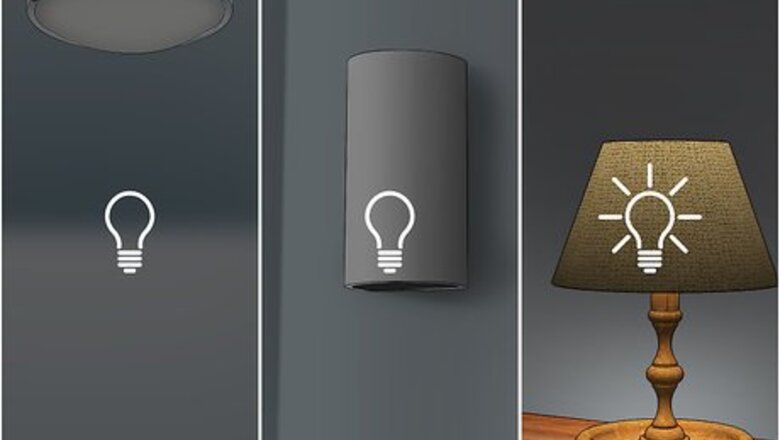
views
X
Trustworthy Source
Centers for Disease Control and Prevention
Main public health institute for the US, run by the Dept. of Health and Human Services
Go to source
Catching a Mosquito with a Light
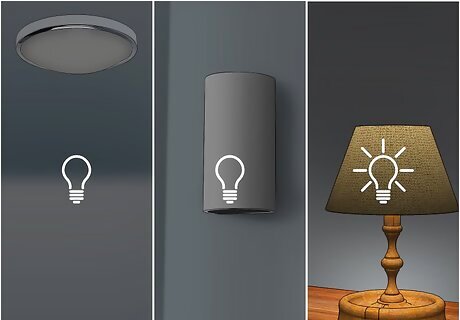
Turn out all lights, except one lamp. Turn off all lights in your room except for one light bulb that is easy to access, such as a desk lamp, in order to catch a mosquito buzzing around your room at night. Mosquitos are most attracted to incandescent light bulbs, so leave this type of light on if you have one. Mosquitos are least attracted to warm LED lights, so try to at least find a cool-toned LED bulb if you don’t have any incandescent bulbs around. Having just one single light source will draw them to a smaller area where they can be trapped.
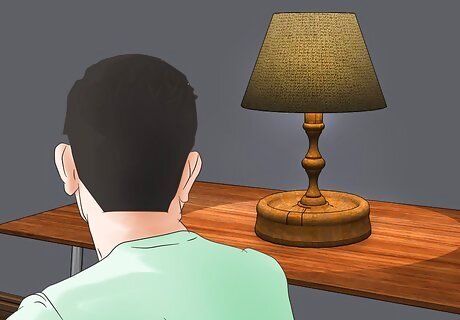
Wait near a lamp and watch for the mosquito to land. Wait for the mosquito near the lamp. The light along with the carbon dioxide you are emitting will draw the mosquito to your area. Listen for its distinct buzzing to know when it is close. Make sure to watch your body to notice if it lands on your skin or shirt. You want to make sure you don’t get bitten in the process of catching it so wear long sleeves or clothing that exposes as little skin as possible.
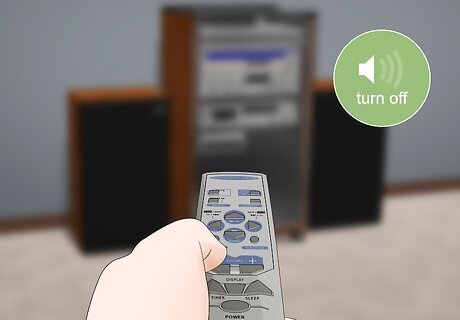
Turn off any excess sound, then listen for the mosquito if you can't see it. Sit very still and listen for the mosquito to buzz near your head if you are unable to see it land anywhere. Turn off background noises such as nearby televisions or radios to make it easier to listen. Sometimes mosquitos are so small that they are difficult to spot. Their characteristic buzzing sound, however, can often be heard.
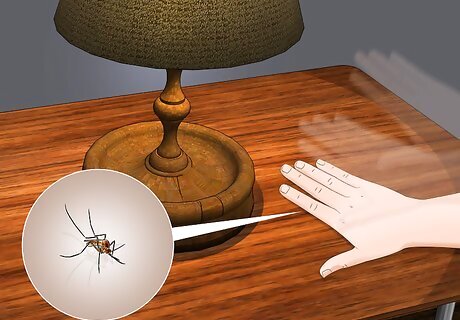
Squash the mosquito to kill it quickly. Use your hand to squash the mosquito once it lands. Make sure to wash your hands afterward to remove any trace of the mosquito. Try using a rolled up newspaper or magazine to swat the mosquito once it lands to increase the force of your swat.
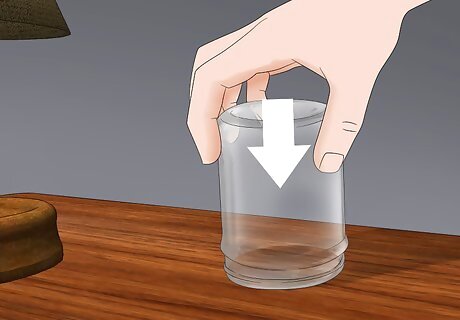
Trap the mosquito in a cup if you don't want to kill it. Place a cup over the mosquito quickly after it lands. Carefully slide a piece of paper between the cup and the surface where the mosquito is resting so that you can move it to another location.
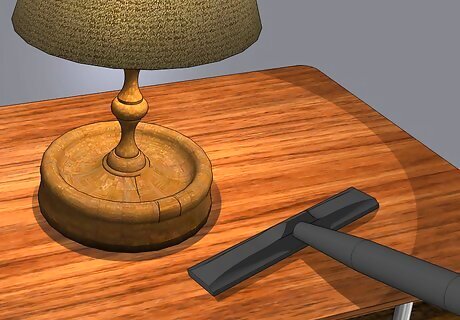
Capture it with a vacuum if you can't see where it lands. Turn on a vacuum and wave the extended wand attachment in the air around your body once you hear it buzzing nearby. The vacuum will draw in the surrounding air and, hopefully, the mosquito along with it. Place the vacuum near the ceiling, walls, and behind the curtains, as these are places where mosquitos like to hide.
Building a Trap with a Fan
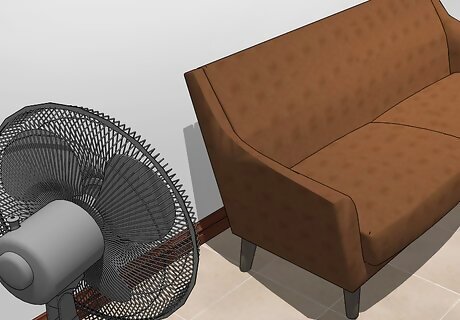
Place a high-velocity fan in the area you’d like to rid of mosquitos. Purchase a high-velocity fan from a hardware store and place it in the area where you would like to catch mosquitos. While you can use a box fan, high-velocity fans are more effective because they move a larger volume of air, meaning they will potentially catch more mosquitos. You may need to use an extension cord if you would like to place your fan outside to catch mosquitos.
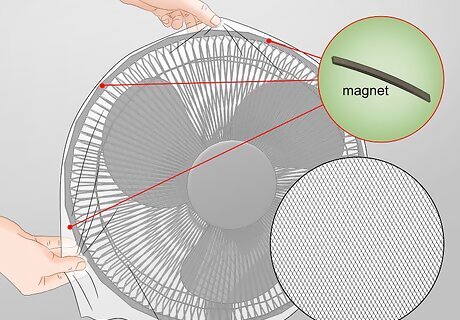
Attach a mesh screen to the front of the fan with magnets. Find a screen with mesh that is too small for a mosquito to pass through and cut it to match the size of your fan. Wrap the edges of the screen around the front of the fan tightly so that they overlap on all sides with the fan's metal frame. Place strong magnets around the frame to firmly fix the mesh in place. If your fan does not have a flat metal frame, you can also use plastic zip ties to secure the mesh to the front of the fan.
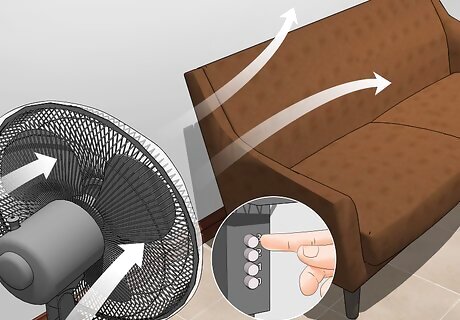
Switch on your fan. Turn the fan on and watch it draw in the air. As the fan sucks in air to blow out the front, it will also draw in any nearby mosquitos, trapping them in the mesh screen. Allow the fan to run continuously until you have caught the desired number of mosquitos. Most industrial, high-velocity fans are designed to run continuously so they are safe to leave on for long periods of time. This typically will not damage the fan’s motor.
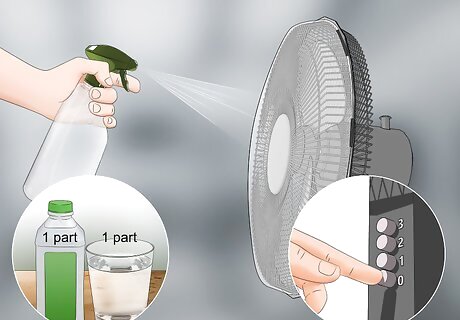
Turn off the fan and spray diluted rubbing alcohol onto the screen. Mix equal parts rubbing alcohol and water then place it in a spray bottle. Spray the rubbing alcohol mixture onto the screen where the mosquitos are caught. The rubbing alcohol will kill the mosquitos. Make sure not to spray the fan’s motor, which is in the center. Just aim for the parts of the screen around the motor.
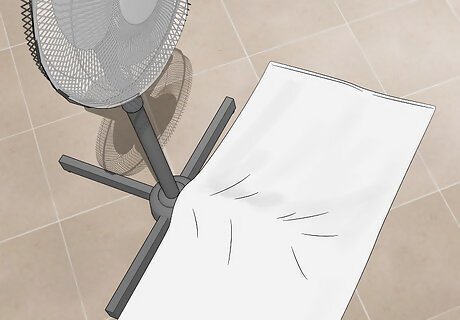
Place a white towel on the ground and wet it with the alcohol mixture. Spray a white towel or paper towels with the diluted alcohol so that it will become a tacky surface. Place the towel directly in front of the fan. The white color is important if you’d like to be able to tell how many mosquitos you have caught.
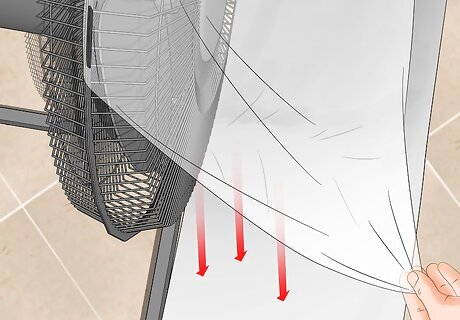
Remove the screen and allow the mosquitos to fall onto the towel. Take off the magnets or any zip ties to remove the screen from the front of the fan. Gently tap the back of the screen with your hand so that the dead mosquitos fall onto your alcohol-soaked towel. Any mosquitos that may still be partially alive will die once they meet the alcohol on the towel. You can either dispose of the mosquitos in the trash or dump them in the yard. The rubbing alcohol will eventually evaporate so you can also consider leaving the mosquitos out for frogs or lizards to eat. Repeat the process of running the fan and cleaning the screen as many times as necessary.
Using a Plastic Bottle Filled with Bait
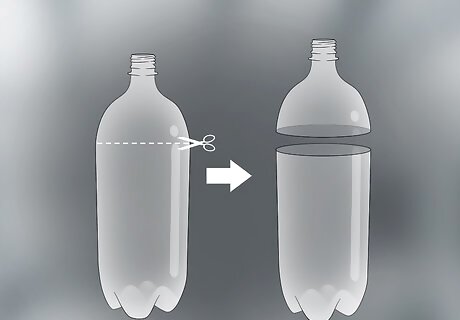
Cut the top off of a plastic 2-liter bottle using a knife. Use a knife to carefully remove the top of the bottle by cutting where the neck of the bottle meets the bottle’s main section. Follow this line as you cut all the way around the circumference of the bottle. Hold the bottle firmly at its base as you cut. Make sure to cut with the blade of the knife facing away from you. If the knife slips on the plastic, it will be less likely to cut you when you are holding it this way. Once the top is removed, set it aside for now.
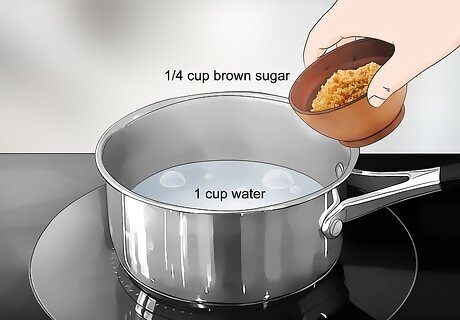
Begin making the mosquito bait by dissolving brown sugar in water. Bring 1 cup (240 mL) of water to a rolling boil in a pot on the stove. Once the water has begun to boil, add ⁄4 cup (59 mL) of brown sugar and remove the pot from the heat. Stir vigorously to make sure that the sugar is fully dissolved in the water.
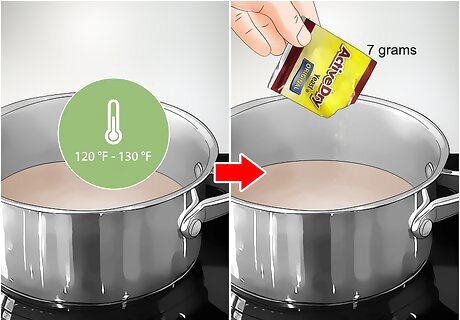
Add a package of dry active yeast once the mixture cools. Wait for the water and sugar mixture to cool before adding 0.25 ounces (7 grams) of yeast; otherwise, the high temperature will kill the yeast. Insert a cooking thermometer to make sure that the mixture is between 120 °F (49 °C) and 130 °F (54 °C) before adding the yeast. Once the mixture has reached the desired temperature, gently add the package of yeast, stirring to incorporate it completely. If you don’t have a thermometer handy, you can also judge whether the mixture is cool enough to use by carefully dipping your fingertip into the liquid. Once it is cool enough to insert your finger comfortably, it is ready for the yeast. Make sure not to let the sugar water cool too much; otherwise, the yeast will not activate.
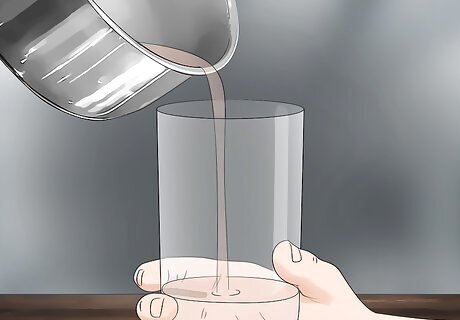
Pour the mixture into your bottle. Hold the bottle firmly at its base with one hand. With the other hand, carefully pour the yeast, water, and sugar mixture into the bottle. Ask a friend to hold the bottle stable for you if you need both hands to safely handle the pot. Your mosquito bait is now ready to go!
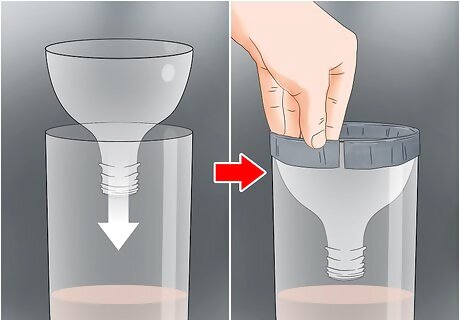
Tape your bottle top inside the base of the bottle to make a funnel. Turn the top of your bottle upside down and place it inside the base of the bottle so that it creates a funnel leading down to the bottom. Use duct tape to securely fasten the bottle top to the top rim of the bottle. Make sure to seal where they meet completely with tape. Do not stick the funnel so far down into the bottle that it comes in contact with your mosquito bait. You want there to be a little space between the funnel’s opening and the liquid.
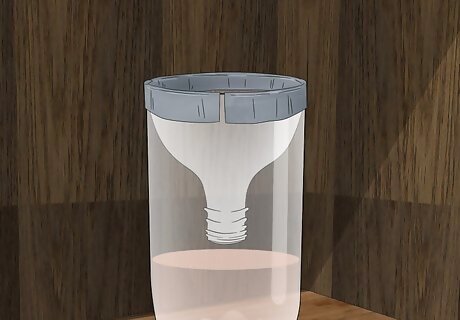
Place your trap in the desired location and watch for them to arrive. Place your trap either indoors or outside in a shady spot. As the yeast interacts with the sugar mixture, it will send up plumes of carbon dioxide that will attract the mosquitos. Once they fly down the funnel to find the bait, they will attempt to leave the bottle by flying up the inside wall, which you’ve sealed with tape. They won't be able to find the small opening of your funnel and will eventually drown in the liquid. If you are trying to catch mosquitos in your yard, do not place the trap near a sitting area. You will likely lead them to you rather than the bottle. Instead, place as many traps as you’d like around the perimeter of your yard. Consider covering the outside of your trap with black construction paper to extend the life of the yeast-filled mosquito bait by blocking out the light. You should replace bait every two weeks.




















Comments
0 comment